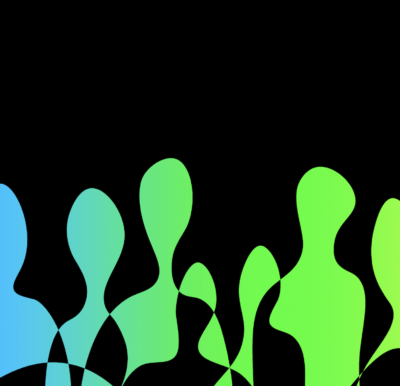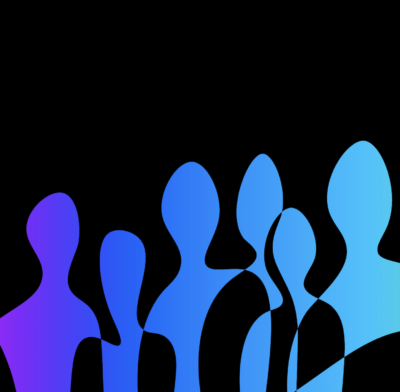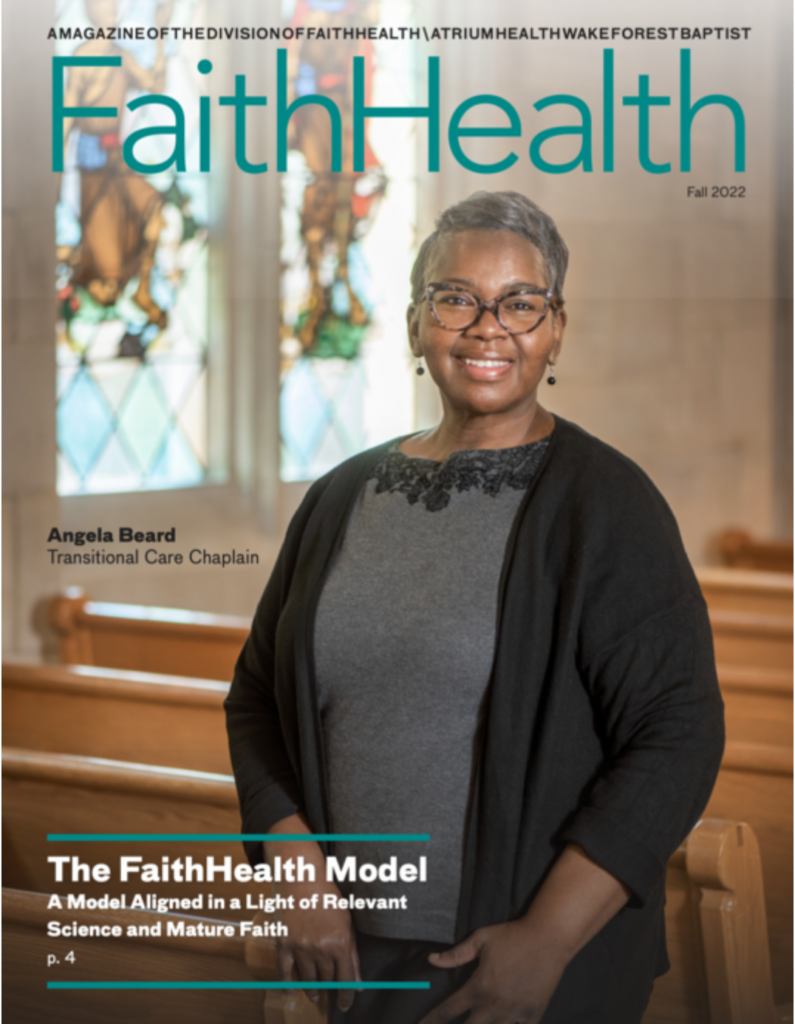
Living into New Possibilities!
By Gary Gunderson
FaithHealth combines the intimacy of faith and the ubiquitous social networks of faith with the emotional consequences of human mortality and vastness of the health care systems. FaithHealth is inside and around our body, mind and Spirit. All of the structures – from congregation to hospital, mental health to ICU – are undergoing radical change.
Dr. Bill Foege noted that you don’t have to know where you are to be somewhere. But if you want to go somewhere else, the first thing you need to know is where you are. A model helps you see where you are in time; the array of institutions and assets in place and how they are related to one another and to the people who live in a place. A good model brings into focus people, resources and networks that you might not have thought as being related or even useful.
 Thinking this way is like going over the high bar in Olympic jumping. Since the first Greek Olympics, it was obvious you get over by jumping right at it. But an ungainly looking Dick Fosbury changed the sport forever when he figured out he could get another inch or 2 of elevation by going over backwards. This was comical …until he won the gold. It unlocked every new possibility. The FaithHealth model is exactly like that – it thinks right-side up, outside in and, most importantly, going over the bar much higher in an unexpected manner.
Thinking this way is like going over the high bar in Olympic jumping. Since the first Greek Olympics, it was obvious you get over by jumping right at it. But an ungainly looking Dick Fosbury changed the sport forever when he figured out he could get another inch or 2 of elevation by going over backwards. This was comical …until he won the gold. It unlocked every new possibility. The FaithHealth model is exactly like that – it thinks right-side up, outside in and, most importantly, going over the bar much higher in an unexpected manner.
The FaithHealth model goes over backwards by seeing the whole as one thing. A jumble becomes a pattern and a map on which you can see public health, law enforcement and education, all 3 linked to health care facilities and then to all of the churches, synagogues and mosques on the same map. How much health care could the model generate? How much mercy, justice and compassion might flow into and through the neighborhoods the model makes visible?
The FaithHealth model in your community includes at least:
- A map of the worshipping communities. In Forsyth County, the IRS estimates there are roughly 700 congregations; but you don’t need all of them. The FaithHealth model wants the 20% “heavy lifter” congregations – the ones already lifting and likely to have muscles to pick up something else. The FaithHealth model invites the willing, but doesn’t try to persuade the unwilling.
- The organizations people of faith create. Those faith communities rarely stay inside their own religious brand; rather they are the ones who established much of the common social infrastructure in a place. In the US, the 60s were a profoundly creative time when many new interfaith and ecumenical social organizations arose from faith networks. As always, the social trauma, including the iconic death of Dr. Martin Luther King, Jr, prompted a wave of hugely practical construction of new organizations aligned with the unfinished parts of Dr. King’s dream. If you look around your city or county, you’ll see those organizations that were once not there; people just like you called committee meetings and created them.
- The networks that live in between congregations and other community organizations. There are roughly 200,000 congregations in the US that are linked like individual nerve cells in complex ways. There are about 200 major religious groupings (Jewish, Baptist, Presbyterian and so on) that have organizational standards and practices for running the congregation, training and placing leadership of different levels. Nearly all of them in the last couple of decades have developed some explicit denominational office for health promotion in their own accent, but with deep common DNA to FaithHealth.
- Congregations that are not just linked by theology. There may be a ministerial association or even 2 or 3. They usually are not distinguished by formal theology, but social perspective. They talk about things of common interests and often work together. During the pandemic, many of these networks were key to public health efforts to get people tested, vaccinated and tested again. If an earthquake hit your town, they could switch to that in hours.
The FaithHealth model sees these congregations, organizations and networks as a system that can be aligned, animated and strengthened in light of a) the most relevant science and b) the most mature faith. Both of those guiding lights can be challenging because both science and faith are not primarily oriented toward the past, or even just the present, best practice.
 Human beings in roles, some new, some transformed. The rich interconnection of the FaithHealth model comes alive through the variety of roles, not ideas. All hands-on deck? There are a lot of hands and plenty of room on the deck. And many of the existing roles in faith and community change by gaining new relevance and capacity. Church secretaries have greatly expanded roles by being trained to screen for basic mental and physical health issues and a bigger referral list to work with. Pastors have more to preach with and about. EMS drivers have more people at their back, including specialized chaplains and clergy. Hospital ER staff know they are not the only ones who care about the homeless person or isolated elder.
Human beings in roles, some new, some transformed. The rich interconnection of the FaithHealth model comes alive through the variety of roles, not ideas. All hands-on deck? There are a lot of hands and plenty of room on the deck. And many of the existing roles in faith and community change by gaining new relevance and capacity. Church secretaries have greatly expanded roles by being trained to screen for basic mental and physical health issues and a bigger referral list to work with. Pastors have more to preach with and about. EMS drivers have more people at their back, including specialized chaplains and clergy. Hospital ER staff know they are not the only ones who care about the homeless person or isolated elder.
It turns out that God is not the only one who loves the whole world.
Science and Faith As Partners
Both science and faith are curious about what might be possible next. And practitioners of both science and faith know to an almost painful degree how much is possible if we could organize ourselves. This magazine is published by people working for an academic medical center with what may be the largest number of people in the division called FaithHealth in the world. But we have not accomplished what our faith suggests or science suggests.
Every Monday morning at 10 a.m., our FaithHealth team meets online to check in and to discuss whether there is anything else we could be doing in our neighborhoods relevant to COVID-19 or mental health. Sometimes, we realize we have to invent something or more commonly borrow from somewhere else, developing their variation of the FaithHealth model.
A 1988 “Closing the Gap” conference of The Carter Center and CDC made clear that two-thirds of all premature death is preventable and probably a similar portion of suffering along the way. The conference gathered faith leaders to see if they could grasp the moral urgency of that finding. This resulted in a long commitment from The Robert Wood Foundation to create the Interfaith Health Program at The Carter Center. That marked the beginning of the FaithHealth movement which has now matured into the FaithHealth model.
What if we could actually see the world as God might – all the created, the principalities and powers that were made for good aligned with all the science that has emerged, powered by all the Spirit of all the names of God in every place that God loves? Why not? This is the question that keeps the FaithHealth model awake at night and wakes it up for another day of work. Why not do the right thing? Why not align all the assets? Why not invite everybody relevant to mercy and justice, healing and wholeness? Why not?
The FaithHealth model links about a fifth of the whole economy and workforce devoted to the health care industry and the most ubiquitous social form – congregations. These institutions all have complicated histories and mixed motives and alloyed goals, so there is no room for naïveté. FaithHealth works from within and around to bend the arc of those vast resources toward the mercy and justice God had in mind. This is not likely to be perfected in the lifetime of anyone reading this, but evidence abounds that it works.
Right Door, Right Time
One of the early surprises was that the FaithHealth model helps the financial interest of the hospital and collaborating agencies. And it strengthens the congregations that participate, so everyone gains. Mercy and justice are cheaper over time, especially when they include the new possibilities of the science of prevention and chronic condition management. All the partners become stronger, smarter and more alive. That science depends on community partnerships and family integration, connection technologies and remote monitoring that undermine the traditional medical castles. But none of the science works without webs of trust among the humans.
Norm Brocklin once said the Notre Dame football team prayed before every game, but the prayers seemed to work better with bigger linemen. Faith works better with evidence-based science.
The FaithHealth model focuses on knowing what matters and how to know it. It relies on the partners helping each other to read reality through all the means possible in today’s data-rich world. The Memphis model is known because it tweaked the new hospital electric medical record to include links to the congregational identity of patients. This located the patient in a social system, not just a belief system. That link to the social network of a patient allowed the hospital to make sure those connections were vital as the person entered into the strange world of the modern hospital. Reading the data then showed us those patients with systematic connections to their congregations had dramatically different patterns. The data taught us the qualities of the FaithHealth model could move hard medical data by focusing on making it a bit more likely that the person came to the hospital at the right place, at the right time, ready to be cared for and, above all, not ever alone.
Community Health Assets Partnership
The FaithHealth model includes systematic mapping of what we now call the Community Health Assets Partnership (CHAMP). There are many tools for mapping community assets, many of which trace back to the work of McKnight and Kressman in Chicago. The CHAMP approach is highly participatory, focusing on seeing the long history of a place and its particular traumas, while bringing to view the web of assets that have emerged over time. Congregations and congregational networks are part of that story, but so are the community structures faith created that may be not-for-profit organizations now. CHAMP also brings to view the way in which faith and other social networks created the politics that created other infrastructure on the map.
Because the map is created by people who live on and love the place, as soon as the array of assets begins to become visible, those in the room start imagining new alignment and flow of energy. By definition, older assets were created out of that generation’s best science and imagination; we have more to work with now, so it is possible to imagine old assets doing entirely new things.
 The FaithHealth model is built on learning, unlearning and relearning how faith and health express themselves in roles that people can assume and live into. One of the earliest roles was the professional chaplain, which came out of the work of Antoine Boisen in Chicago. He created a new model of learning based on guided reflection and the practice of being spiritually present to the full reality of a patient. This rapidly spread to Baptist Hospital, now Atrium Health Wake Forest Baptist, as the novel way of learning made possible professional chaplaincies appropriate to the radical demands of the modern hospital. Today, clinical pastoral education (CPE) is core to the FaithHealth model in training other roles outside the hospital, such as chaplains embedded in first responder teams, and into new models of community-scale trauma prevention and recovery.
The FaithHealth model is built on learning, unlearning and relearning how faith and health express themselves in roles that people can assume and live into. One of the earliest roles was the professional chaplain, which came out of the work of Antoine Boisen in Chicago. He created a new model of learning based on guided reflection and the practice of being spiritually present to the full reality of a patient. This rapidly spread to Baptist Hospital, now Atrium Health Wake Forest Baptist, as the novel way of learning made possible professional chaplaincies appropriate to the radical demands of the modern hospital. Today, clinical pastoral education (CPE) is core to the FaithHealth model in training other roles outside the hospital, such as chaplains embedded in first responder teams, and into new models of community-scale trauma prevention and recovery.
An even newer model of shared learning is found at Future Generations University, which is training community health weavers – the infantry of the FaithHealth model to weave all the assets at very local levels. The FaithHealth model continually creates and recreates roles that make it possible for people to live into, to learn, and to become competent and effective in advancing the health of the place you love.
The FaithHealth model is inconveniently disruptive because it makes visible and urgent how much is possible with what we already have, what we already know and what we already believe. We’ll discover more science and our beliefs will mature too. We find ourselves drawn into complicated partnerships with organizations and people that embarrass our old friends. Read the New Testament and see if that doesn’t remind you of someone.
We must not wait, as we are already swimming in possibilities that make our current disparities scandalous, our current levels of anxiety, depression and violence unacceptable. So much diabetes is simply unnecessary and thus literally wicked. The answer is not financially impossible schemes selling false dreams of miracle pills and experts. Rather, the FaithHealth model sees a realistic and practical alignment of the social assets of any real place organized around solid science, moral management of at least the public, non-profit organizations and faith organizations. We see the possibilities of a new wind of the Spirit blowing into the dry bones of old institutions, bringing them alive to their purpose and possibility.
